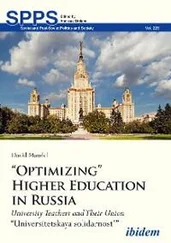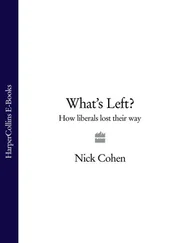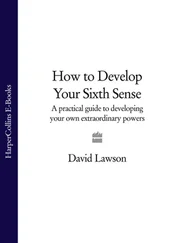In 1994, Shleifer and Zimmerman, with the help and advice of Leonard Blavatnik, a New Yorkbased Russian emigrant and a member of the Forbes 400, placed $200,000 in a Blavatnik vehicle called Renova-Invest, which invested in a group of Russian corporations that were being privatized under Shleifer's guidance. The companies included telephone operator Rostelecom; oil and natural-gas behemoth Gazprom; aluminum smelters in the cities of Irkutsk, Sayansk and Bratsk; Vladimir Tractor; and oil producer Chernogorneft. The U.S. government alleged in its complaint against Harvard, Shleifer and Hay that these companies benefited financially not only from Shleifer's advice on privatization but also from AID-funded assistance, including free legal services. When Blavatnik was merging several aluminum companies in which Shleifer and Zimmerman had invested, Hay and other AID-funded lawyers worked on the merger documents at no cost to Blavatnik or the companies. According to a U.S. statement of "undisputed material facts" submitted with the lawsuit, Hay was aware of some of the private investments of Shleifer and his wife, which were violations of the bars against private investment in Russia.
Also in the summer and fall of 1994, the Shleifers partnered with Farallon Capital Management to invest in Russian oil stocks. "Investing in Russia at that stage was like the Wild West, and we were petrified about getting involved," Farallon partner David Cohen later told a federal grand jury. (Farallon would, in fact, lose money on these oil stock investments.)
Cohen, who had been a Rhodes Scholar at Oxford University with Hay, said: "There was incredible crookery. . . . We wanted to get as much protection as we could . . . and we thought Andrei provided some of those things. People might have been more hesitant to hurt Andrei Shleifer than to hurt Farallon. . . . His relationship to Chubais was definitely one of the factors."
Shleifer began the investment process on August 11, 1994, by wiring $165,000 to a Channel Islands bank account for the purchase of 30,000 shares of Russian oil company Purneftegas. By November 4 a total of more than $4 million was invested, 90 percent by Farallon, 10 percent by Shleifer and Zimmerman. The Shleifers concealed their investment by registering the shares in the name of Zimmerman's father, Howard Zimmerman, a Chicago investor in real estate and racehorses and a director and shareholder of a small institution called Central Illinois Bank.
Shleifer suggested that Hay join his Rhodes Scholar friend Cohen among the investors. Hay chipped in $66,000, but only after directing an AID-funded Harvard staffer in Moscow to research the price and trading activity of Russian oil stocks. Louis O'Neill, a first-year student at Harvard Law School who was working in Moscow for the summer, found that the information -- a mix of pricing and liquidity data on a less-than- transparent market -- was harder to obtain than in Western securities markets. Fluent in Russian, O'Neill posed as the "Russian representative of a foreign investor who was keen to enter the Russian securities market," he stated in a sworn affidavit filed later in the U.S. lawsuit.
"I remember [Hay] telling me to look at oil and gas because they were sort of in the forefront of privatization," O'Neill testified. "He said, 'Get me some answers on what's happening in the market.' [Oil and gas] would be the most valuable assets in the economy, so of course they would be the most desirable things."
Once the stock was purchased, Hay turned to Julia Zagachin, 26, who had been born in Russia and moved to the U.S. when she was 11. After graduating from George Washington University in Washington, D.C., with a degree in international politics, Zagachin had gotten a job with Deloitte & Touche. She would become one of Jonathan Hay's first hires at HIID. In 1994, Hay appointed her to run another AID-funded enterprise, the Depository Clearing Co., which was intended to become Russia's central clearinghouse for securities transactions. After the Shleifer-Farallon stock purchases, Hay instructed Zagachin to make sure the securities were properly registered, because the owner, Hay said, was an "old Oxford friend" (David Cohen of Farallon) who should receive "the best service."
Less than a year later, while still holding oil shares, Shleifer wrote a memorandum to Russian officials advocating the inclusion of oil stocks in a program to distribute Russia's energy assets to rich entrepreneurs in exchange for loans to the government.
The ironies abound. Russia, where secrecy and corruption were ubiquitous, was looking to the U.S. and Harvard as beacons of honesty and transparency in financial affairs. Gaidar, Yeltsin's sometime economic adviser and erstwhile deputy prime minister (he left the government for the second time in early 1994), even invoked Thomas Jefferson and the Declaration of Independence as inspiration for an open and free economic system "fitting for Russia." Gaidar wrote his words in the summer of 1994, at precisely the time that some of America's representatives, while giving lip service to those principles, appeared to be using inside connections to enrich themselves from investments in a Russia still mired in corruption.
JEFFREY SACHS, MEANWHILE, WAS SPENDING less time in Russia and more in Cambridge, where he would eventually become director of HIID. His appointment was not good news to Shleifer, who feared that Sachs would encroach on the Russia Project's turf and who instructed Hay not to speak to Sachs at all. Shleifer needn't have worried. Sachs knew nothing of Shleifer's investments. However, he did warn Shleifer about corruption in Russia, telling him to carefully vet the institute's Russian employees.
Shleifer and his wife could be surprisingly unguarded about their dealings. In October 1994, at a cocktail party at the home of Dale Jorgenson, then-chairman of Harvard's economics department, Shleifer and Zimmerman chatted casually about their Russian investments. The gathering was brimming with economics stars. In 1971, Jorgenson had won the John Bates Clark Medal, which the American Economic Association awards every other year to the person under 40 making the greatest contribution to economics. Another prominent Bates Clark medalist, Harvard economist Martin Feldstein, who had been chairman of the White House Council of Economic Advisers under Ronald Reagan, was also present. Feldstein was intrigued to hear of the Shleifers' investments and phoned Andrei later for a referral to Blavatnik. He ultimately decided against investing in Russia.
Indeed, the chaos had made it clear to the Russian government and its advisers that tighter organization and focus were needed at the Harvard project. In November 1994, Yeltsin issued a decree creating a centralized authority responsible for developing the Russian securities market. Though officially named the Russian Federation Commission on Securities and the Capital Market, the agency was commonly called the Russian Securities and Exchange Commission. This was appropriate: The American SEC was not only the model but was lending technical assistance funded by AID. Charged with running the RSEC were Chubais and Vasiliev, who had launched privatization three years earlier and were ready for a new challenge. Keeping close tabs on the agency were Albert Sokin, a tough lawyer from the St. Petersburg reformers, and Ruslan Orekhov, Yeltsin's chief legal counselor, whose responsibilities included reform of the legal system.
Through HIID, AID funded the Resource Secretariat, a think tank created in late 1994 that coordinated aid flowing to the new Russian securities commission for the creation of stock exchanges, broker-dealer networks, back-office functions and, most fundamentally, codes of law -- securities law, corporate law, tax law and bankruptcy law -- governing the vast new economic activity set in motion by privatization. The crafting of law was based in an entity called the Legal Reform Project, which later created the Institute for Law-Based Economy. The ILBE was staffed by American-guided Russian lawyers.
Читать дальше
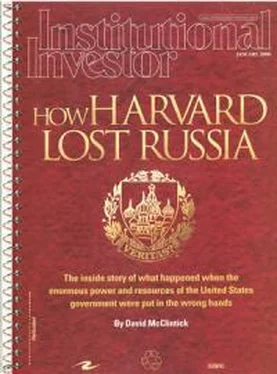
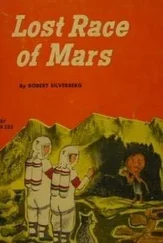


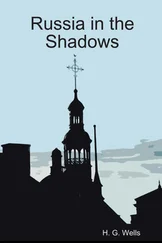

![Джонатан Димблби - Barbarossa - How Hitler Lost the War [calibre]](/books/385421/dzhonatan-dimblbi-barbarossa-how-hitler-lost-the-w-thumb.webp)

